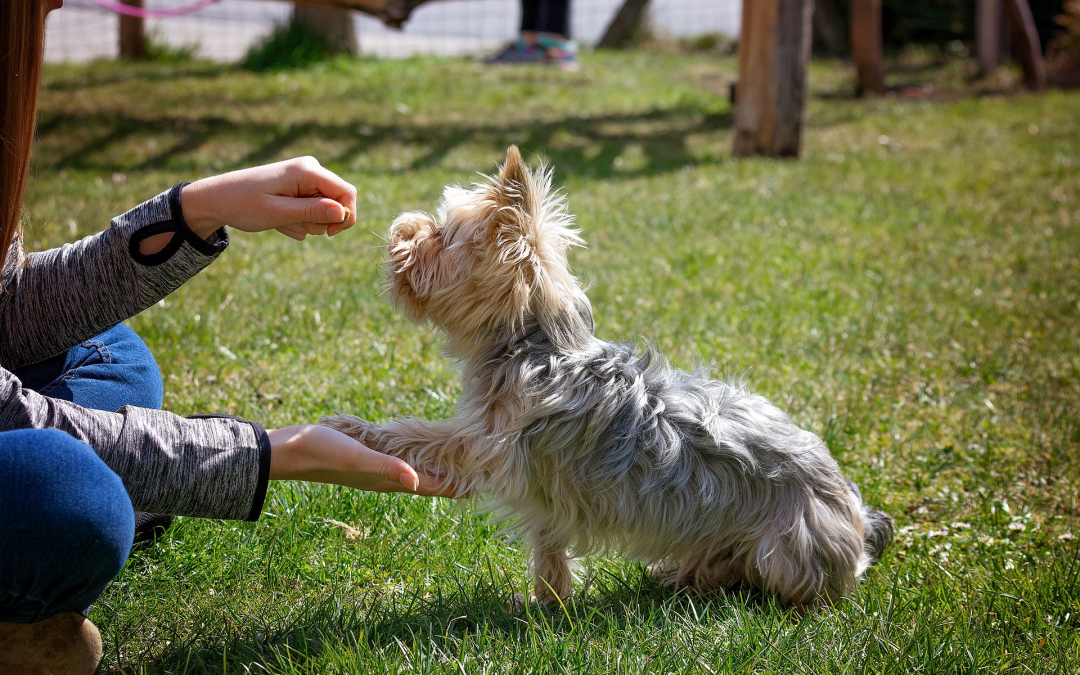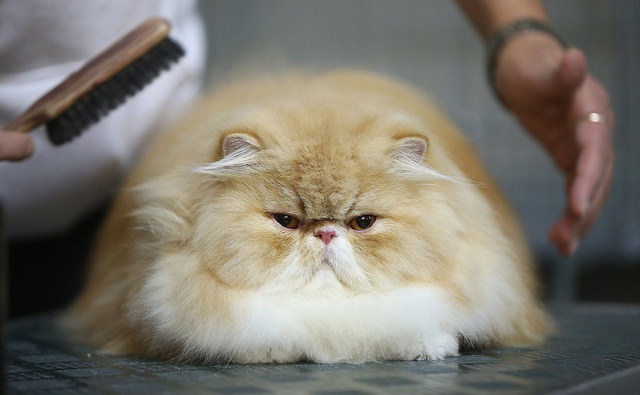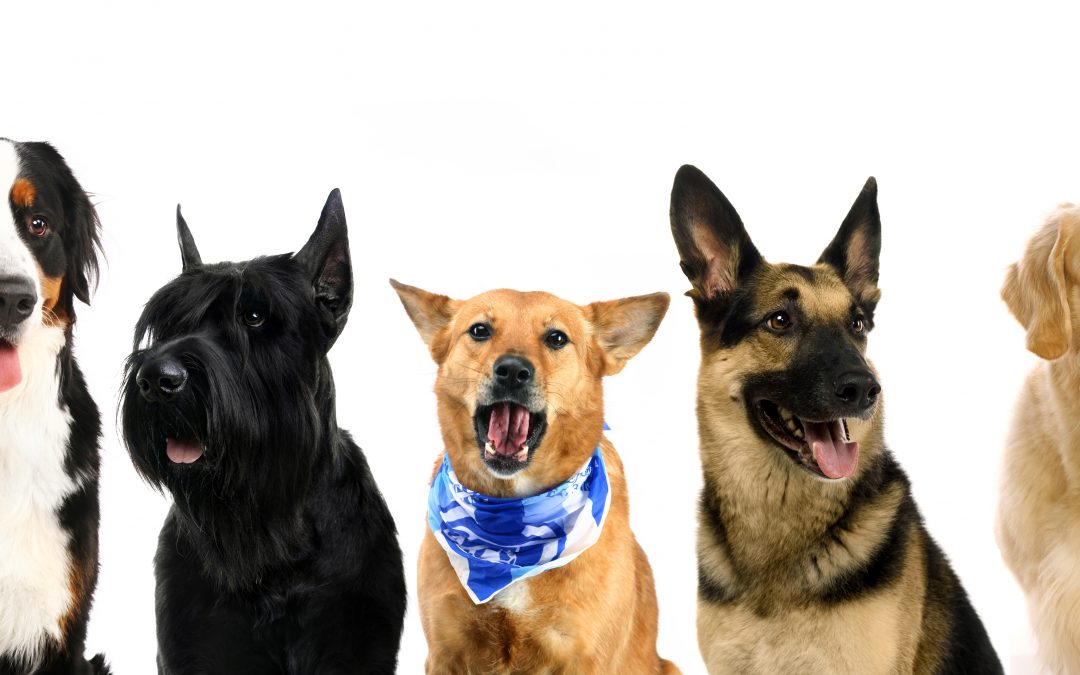
An Introduction to Basic Dog Training
Even if you don’t plan to take your dog to competitive sporting events, or to take him with you on hunting trips, you still need to give him basic dog training. Dog training teaches your dog to be comfortable around others, walk on a leash, listen to your commands, and obedience. These all help to keep him safe and ensure he always responds to you.
No doubt teaching your dog the basics will take time, but once he learns them, you and he can be safer in any type of situation.
Top Basic Dog Training Tips
- Dog training should always be fun for both you and your dog.
- It also helps to exercise his brain.
- Training him yourself helps you build a great relationship between the two of you.
- Always use positive reinforcement, and never punish your dog when training him.
- Never physically force your dog to do something – always show him how.
- Be consistent with your commands, keeping them to one word and your dog’s name.
- Exercise patience and never frighten your dog. He just wants to please you, so offer plenty of praise.
- Training sessions should be short because you want to keep them fun, not boring – 10 to 15 minutes is enough.
- Never train in busy areas full of distractions – save going to these once he learns to listen completely to your commands.
What you will need for your dog’s introduction to dog training
- Your dog, a positive mindset, loads of praise, and realistic expectations!
- Initially, an area free of distractions, but this can change once he starts listening to your commands.
- Treats that are nibble-sized are one of the best rewards at the beginning, but you can also offer a toy. If the treats are too large, they will fill your dog up too quickly – you want to train him, not fatten him up!
- A short and long leash.
Best age for dog training
Simple training can start from as young as a few weeks, so the minute you bring your puppy home start with simple obedience training. The younger your puppy learns to listen to you, the faster you will be able to take him everywhere.
When you start to train your dog, it doesn’t understand what each word means. You need to make sure that he associates the word of the command with the action you want him to take by indicating the action. Therefore, one example is the word “sit”; saying it is not enough, you must indicate he has to place his rear end on the floor.
What are the basic commands every dog must learn?
According to the Dogs Trust Organization in the UK, five basic commands are essential for every dog to learn. These are: sit, stay, down, come, and walking on a lead.
Even introduction to dog training takes time and patience, but every dog owner has a responsibility to make sure they offer their dog this fundamental training. Proper training and socializing a dog may be trying, but if you don’t have the time or patience, get expert assistance. Professional dog trainers can help you train your dog, and they can help you correct problem behavior if needed.
Have plenty of treats handy when teaching your dog these basic commands.
1. Teaching your dog to “sit”
- Let your dog stand in front of you.
- Have a treat in your hand, and show it to him.
- Move your hand with the treat above and over his head towards his tail, and say the command “sit.”
- Usually, his head will go up as he tries to reach the treat and his bottom down into the ‘sit’ position.
- Don’t push his bottom to force him to sit because he may push up, something which can result in a back injury.
- Be consistent and always use the same command, otherwise, you may confuse your dog. Remember: the command is always “sit” because “sit down” will end up confusing him when you try to teach him the “down” command.
- Once he sits, give him the treat and offer praises.
2. Teaching your dog the “down” command
- Get your dog to sit and show your hand and the treat.
- Move your hand down slowly towards the ground just in front of his feet as you give the command “down.” Your dog will follow your hand with his nose and lay down as commanded.
- Offer him the treat and praise.
- If you are having some trouble getting him to lie down it helps to place a coffee table or a chair between you and him before trying again. Your dog will have to get down under the barrier to get the treat, showing him what you expect him to do. Once he gets the knack of what you are trying to teach him, remove the barrier.
- Once again, never push or force your dog’s back down.
3. Teaching your dog to stay
- Ask your dog to sit or lay down.
- Move back one step as you command him to “stay,” and count to three silently.
- Step toward him, give him the treat, and praise him.
- If he gets up, get him to sit again and repeat the “stay” command.
- Once he masters the ‘stay’ command, gradually increase the distance or time between you and him. If he gets up before he should, decrease the distance or time again before gradually increasing again until you are satisfied that he is listening to your command every time.
4. Teaching your dog to come
- With your dog on the leash and in the down, sit or stay position, walk a short distance and say “come” while indicating with your hand.
- Don’t pull on the lead.
- If you see that your dog is hesitant to follow, get closer to his level when giving him the command. This makes him feel more comfortable.
- When your dog reaches you, reward him with the treat.
- Once your dog is doing this every time, practice doing it with you in the standing position.
- As he gets better, start training him without the leash on in a fenced area. He might be hesitant to do this without the leash, you can use the long leash for a while until he is happy to do it without the leash.
- Finally, you should never leave your dog without a leash anywhere until he has learned this command properly. Read up on the leash laws before having your dog off-leash in public areas.
5. Teaching your dog to walk on a leash without pulling
Leash walking is very important if you want to enjoy pleasant walks with your dog. First practice at home, where there are fewer distractions.
- Choose the side that you prefer for your dog to walk on.
- Always hold the lead in the opposite hand, keeping it loose, and have a treat in the hand closest to your dog.
- Before walking forward, show your dog the treat.
- As he follows your hand, say “heel” and give him the treat.
- With another treat in your hand, keep going. After a short distance, as he keeps to your side, say “heel”, and give him the next treat without stopping.
- If your dog doesn’t keep up with you or pulls in another direction, change direction suddenly to distract him and encourage him to come with you.
- When he catches up, praise him, and give him a treat.
- Keep this up until he understands what he’s supposed to do.
Dogs love to explore the area they are walking in. They do this by sniffing everything around them for the scent left by other dogs. When you are walking with him, allow your dog to sniff around. You can teach your dog to know when he is allowed to sniff around and when not by giving him a command.
Phasing out treats with secondary reinforcements
When you first start basic dog training, your dog needs to see the food in your hand. This allows you to capture his attention and to guide him to do what you are teaching him. But, as your dog is keener to comply, start hiding the food in your hand as you continue giving your training commands. Always reward his obedience with a treat and praise.
Your dog will soon come to expect a treat each time he completes a task, and you don’t want that. Gradually move on giving the food treat randomly during his training time, and only offering praise and an affectionate pat for each completed task. Soon your dog will respond to all the rewards eagerly, including secondary reinforcement like kind words or affectionate pat. Secondary reinforcement is important because you won’t always have food around to get your pet to obey you, and you don’t want a dog that only obeys because it is getting a treat.
In the beginning, you will only be asking your dog to perform tasks during his training sessions, but with time, get him to practice the things he has learned randomly.
Final take on Dog Training
The introduction to dog training can be tough, and if you or your dog ever feel overawed, consider training classes. Additionally, if you are training a young puppy, you should know that sometimes they go through a period of anxiety and fear. This is at around 14 to 16 weeks. Under no circumstances must you overwhelm or push your puppy. Be gentle and supportive, and he will soon overcome this stage.
Like basic training, dog grooming is an essential part of your dog’s routine. A clean and well-groomed dog is happier when it is going through the routine of learning good behavior. Pet owners and pet groomers connect here at https://www.petgroomerfinder.com/.





